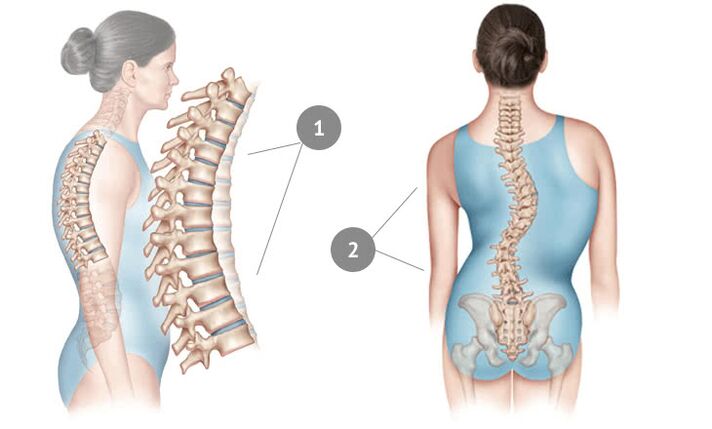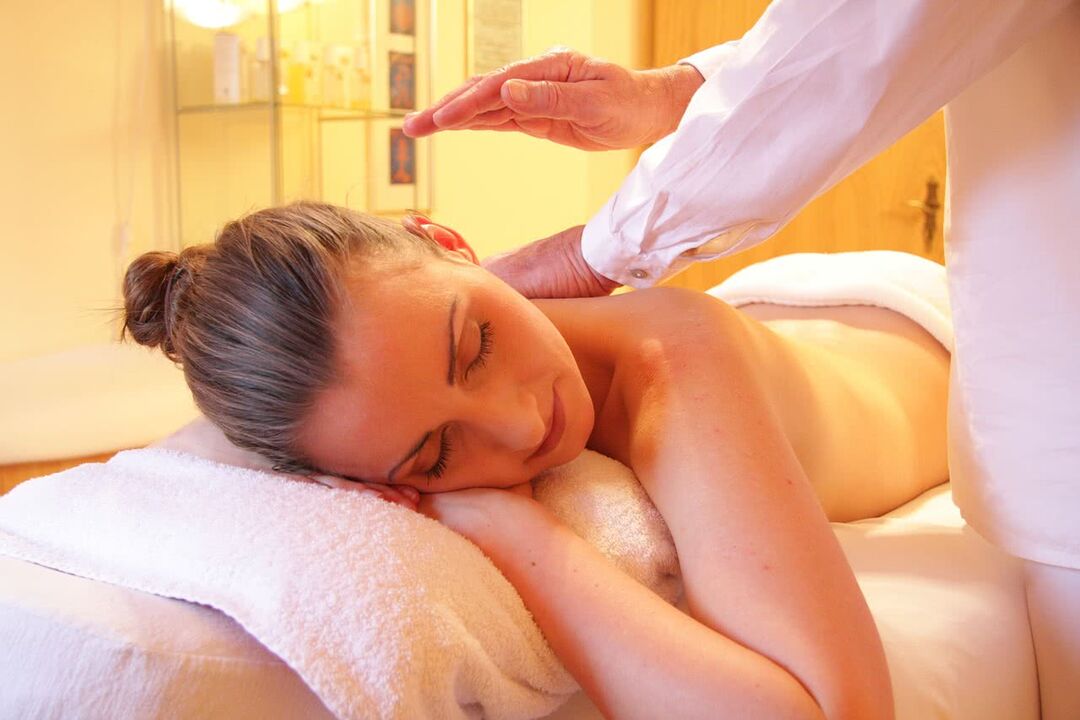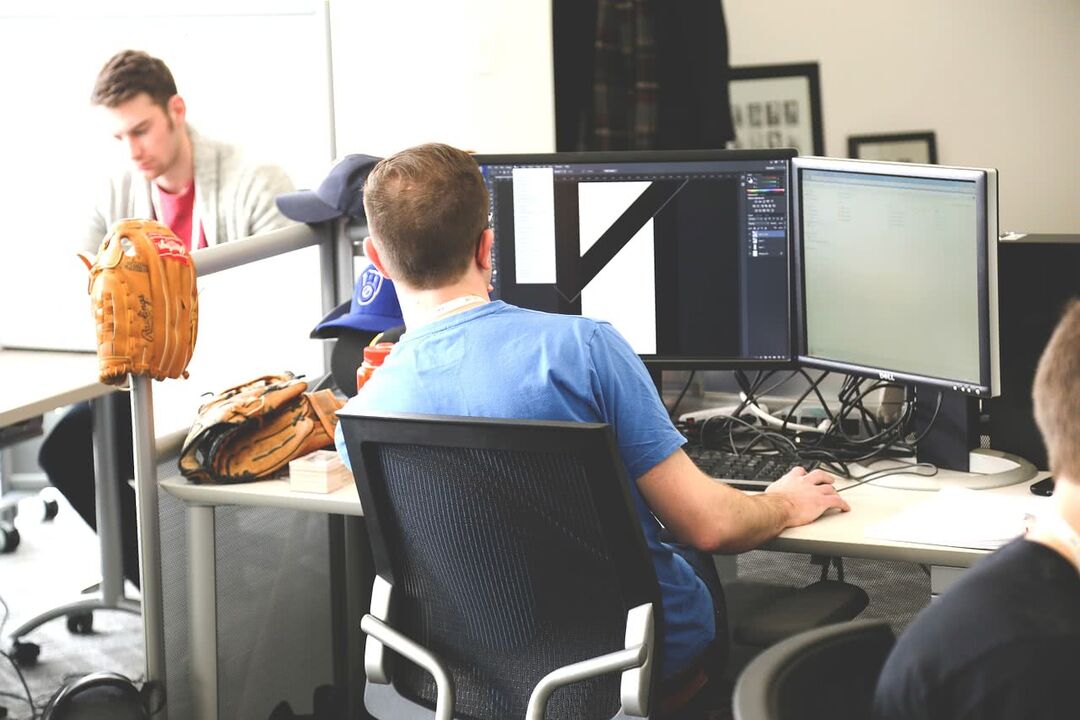Thoracic osteochondrosis is a disease in which the intervertebral discs in the chest are destroyed. This department is less susceptible to disease because it is the most sedentary.
Thoracic osteochondrosis is characterized by spasms and pain in the chest, under the ribs, shortness of breath, stabbing, cutting, sharp pain in the back of the sternum. The symptoms and manifestations of the disease may be similar to other diseases.
Symptoms
Back pain is the most common and superficial symptom. Of course, people do not always talk about the development of osteochondrosis. Therefore, you should pay attention to other feelings in the body:
- Unpleasant feelings and chest pains. If you are often sedentary, you may not feel it. However, you will notice that the pain intensifies as soon as you start any physical activity that speeds up breathing. The nature of this pain can be called shingles.
- In addition, you can feel pain in completely unexpected places - in the heart, abdomen, liver. This is due to the fact that thoracic osteochondrosis tends to be "masked" as a specific disease. For example, many people confuse it with gastritis, ulcers or angina pectoris.
- If you occasionally notice "goosebumps" in your chest, then this, along with other manifestations, may indicate thoracic osteochondrosis.
- In some cases, loss of sexual function, for example, can lead to impotence in men.
Pain in thoracic osteochondrosis
One of the main features of this type of pain is shingles. But it is not always possible to recognize this pain from him. Here's how it can be felt and characterized otherwise:
- manifests itself most often in the dark, behind the sternum;
- a feeling that can be described as a "share in the chest";
- discomfort in the hypochondrium, both right and left;
- feeling as if there was a foreign body behind the sternum;
- If the lesion affects only the upper part of the thoracic region, the pain may be experienced by a person in the esophagus and pharyngeal region.
Since these symptoms are still very vague and can talk about a number of other diseases, the doctor recommends an additional ECG test.
Effects on organs
In the process of development, this disease can adversely affect the internal organs, ie the lungs and heart. Things that can cause thoracic osteochondrosis:
- effect on the heart. It is mainly caused by compression of nerve roots in the chest. After all, the nerve plexuses of the heart go from there. It is these plexuses that are involved in the regulation of the heart. The main alarms here are regular heartbeats (extrasystoles), arrhythmias, tachycardia. The effects on the cardiovascular system, therefore, may manifest themselves in one or all of these symptoms at the same time;
- effects on the lungs. Most often it manifests itself with shortness of breath and at the same time painful sensations.
Why does thoracic osteochondrosis appear?
Although osteochondrosis is very common in general, thoracic osteochondrosis is less common. Preliminary conditions for the onset of this disease, sadly, can be found among schoolchildren sitting at their desks. Therefore, children may develop scoliosis, and osteochondrosis in adulthood. Most other causes of scoliosis are closely related:
- posture disorder;
- metabolic disorders affecting the integrity of the intervertebral discs;
- sedentary lifestyle;
- hereditary causes;
- spinal cord injury;
- static work and stay in a restless, wrapped position for a long time.

How to treat?
After an accurate diagnosis is made during the tests, the doctor prescribes special medication. In the case of thoracic osteochondrosis, depending on the severity of the disease and the characteristics of its manifestation may include the following drugs:
- First of all, medications are prescribed to "relieve" the pain and relieve the discomfort. They are called non-steroidal anti-inflammatory drugs or glucocorticosteroids.
- Papain is used to prevent dehydration of the intervertebral disc.
- Drugs called "chondroprotectors" are prescribed. With their help there is a general strengthening of cartilage tissue.
- Medications can be added to the list to relieve spasms of the muscles around the spine.
- If the development of an inflammatory process is detected, a special anti-inflammatory therapy is prescribed.
But, of course, medication alone is not the answer. Make sure you follow a healthy lifestyle and proper nutrition. These actions will be useful not only for treatment, but also for the prevention of this and many other diseases.
Exercises for thoracic osteochondrosis
Since lack of physical activity is one of the main reasons for the development of the disease, the role of sports in this situation is great. In addition, by completing medication with exercise, your body will return to normal and stabilize faster.
There are a number of special exercises for the thoracic region. When performing them, follow the basic rules: do not shake, move slowly and smoothly without trying to overload the body. The amplitude is allowed to increase, but only if you do not feel pain. So what are the most effective exercises given by physiotherapy?
- Lie on the floor on your stomach. Hands - across the body. We bend in the thoracic region - smooth, soft. Raise your arms and head as much as you can feel, but try to avoid the pain. It is recommended to complete at least 5 approaches.
- For the next exercise, we need a chair with a small, firm back. Sit exactly in the chair. We breathe, lean back and pull our arms back. Then we return to the starting position. Repeat 10-12 times.
- We stand up straight. Hands sewn, feet together. We take a deep breath and raise our hands. During exhalation, we slowly lean back and lower our arms. We return to the starting position. It is recommended to take 7-9 approaches at a time.
- Get up on all fours. Slowly bend your back as you breathe in, and return to your starting position as you breathe out. Repeat the exercise 7-10 times.
- We lie on the ground on our stomachs. Hands in stitches. Your task is to pull your body off the ground by extending your head to your heels. We pull the whole body, work the chest. The number of approaches required is 7-8.
- We work with the upper part of the thoracic region. Starting position - hands at the seams, feet shoulder-width apart. We work with our shoulders. We lift them together first, and then each separately. We bend our shoulders back and forth, back and forth. We implement 10-15 approaches for each task.
- You can also do circular movements with your hands for the upper part of the thoracic region. Starting position as in the previous task. We extend our arms to the sides and clench our palms into fists. We turn our fists back and forth, then our hands back and forth from the elbows, then our whole hands back and forth. We perform each part of the exercise 4-6 times, in general, we repeat the exercise 2-4 times.
Exercise for at least 15-20 minutes in the morning and evening. Dilute with a series of exercises for other muscle groups, including some of the above options.
Massage
Massage is also a very good tool in the fight against osteochondrosis. Here, after a thorough examination of the patient, a therapeutic massage prescribed by a specialist takes place. You can do this at home - here are a few options on how to do it.

Honey massage. We need 2-3 tablespoons of honey, preferably sugar-free, warm. Dip the palms into the puppies so that they are covered with a thin layer. We apply it to the area behind the sternum and tear it sharply, repeating several times, the palm moving from place to place.
This massage should not be performed for too long as it is painful. 10-15 minutes is enough for one session. After that, the skin will turn red, "fuel".

Classic massage. It consists of several stages: tapping, kneading, vibration, rubbing. It is recommended to massage using an anti-osteochondrosis cream or ointment - this can be recommended by the attending specialist.
The duration of this massage should not exceed 20 minutes, and the total course of treatment with this method should not exceed 11-13 sessions. As a preventative measure, kneading is therefore recommended for the neck, arms, shoulders, hips and even legs.
Home remedies
In addition, there are alternative methods for the treatment of thoracic osteochondrosis. For example, friction is very good and can be used to massage the base. Usually taken from the base of lilac flowers, horseradish root, garlic, onion, potato, ficus. Honey, vegetable oil, sometimes cologne or alcohol are added. Mix everything well to a homogeneous mass and rub the damaged area. For example, according to the following recipe, you can make a rub from ficus leaves:
- 6-8 ficus leaves are rubbed or cut into small pieces. Placed in a container, where 2 bottles are poured with triple cologne. Stir. Grinding should be in a dark place for 2 weeks. Then use at least 2 times a day until the skin becomes warm.

Computer work is one of the most important causes of osteochondrosis. If you stay at the computer for a long time, it is recommended to exercise at least every two hours.
Computer work and osteochondrosis
Working on a computer every day without physical activity can lead to bad posture. This is due to the fact that a person does static work for a long time, does not rest the muscles and spine, and does not have any warm-ups or delays. Without correcting this problem in the future, osteochondrosis of the thoracic region may develop.
To prevent this from happening, experts often recommend computer charging, which is designed specifically for office workers.
For example, the following exercises are very good:
- Bend your back, raise your arms, throw your head back. Feel a pleasant weight on your back. Do it at least 3-4 times every hour after working on the computer.
- Make circular rotations with your head. Look left and right, tilt your head back and forth.
- Raise your arms up - to the sides - forward - to the sides. Repeat several times.
- If possible, stand next to your workplace and move from foot to foot.
Remember to change your position while working on the computer, then you will maintain your health, spine and posture for a long time!
Strengthening the back muscles with osteochondrosis
Strengthening the back muscles is a very important part in the treatment and prevention of osteochondrosis. All you need to do is engage in physical activity - exercise, go to fitness classes or the gym. Choose the option that suits you best. For example, swimming strengthens muscles well, so you can not only enjoy, but also improve your body.



































